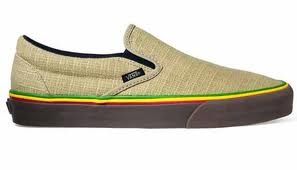During my teen years, I was surrounding by friends who smoked marijuana and drank excessive alcohol. I have seen much more damage caused by those who drank alcohol than by those who smoked weed.
Let’s take a look at some facts about alcohol:
- Drunk driving causes approximately one-third of all traffic fatalities in the United States*
- In 2007, alcohol-impaired driving was responsible in the deaths of nearly 13,000 Americans**
- On average, someone in the U.S. is killed by a drunk driver every 40 minutes*
- Nearly 75% of drunk drivers involved in fatal collisions are not wearing safety belts**
- Approximately 75% of fatal crashes occurring between midnight and 3 a.m. involve alcohol***
- The highest rates of drunk driving occur among drivers aged 21-24. This age group makes up 35% of alcohol-impaired drivers involved in fatal collisions***
- Men are about twice as likely as women to drive under the influence of alcohol and to be involved in a fatal collision**
References
*Centers for Disease Control and Prevention. “Motor Vehicle Safety: Impaired Driving.”
**National Highway Traffic Safety Administration. “Traffic Safety Facts: 2007 Traffic Safety Annual Assessment-Alcohol-Imparied Fatalities.
***National Highway Traffic Safety Administration. “Traffic Safety Facts: Alcohol-Impaired Driving.”
facts about marijuana:
- Marijuana is created from the dried, shredded flowers and leaves of the hemp plant, Cannabis sativa*
- The international and scientific name for marijuana is cannabis. However, the substance is most commonly called marijuana within the United States*
- The first law in the American colonies regarding marijuana was a 1619 law that actually required farmers to grow the hemp plant. Once harvested, hemp was useful for clothing, sails and rope*
- During the temperance movement of the 1890’s, marijuana was commonly recommended as a substitute for alcohol. The reason for this was that use of marijuana did not lead to domestic violence while alcohol abuse did*
- Prior to its ban, hemp was a staple cash crop of the family farm in early America. The first two drafts of the United States Declaration of Independence were written on paper made from hemp**
- The Controlled Substances Act of 1970 made it illegal to possess, use, buy, sell, or cultivate marijuana in the United States***
- Current supporters of medical marijuana believe the drug has significant medical value for patients who suffer from AIDS, glaucoma, cancer, multiple sclerosis, epilepsy, and chronic pain. Several studies have been published to support and document this belief****
References
*Booth, Martin. 2003. Cannabis: A History. London, England: Doubleday.
**Robinson, Rowan. 1996. The Great Book of Hemp: The Complete Guide to the Environmental, Commercial, and Medicinal Uses of the World’s Most Extraordinary Plant. Rochester, VT: Park Street Press.
***U.S. Office of National Drug Control Policy. “Marijuana Facts & Figures.”
****Chapkis, Wendy and Ricard Webb. 2008. “Dying to Get High: Marijuana as Medicine. New York, NY: New York University Press.
For additional random facts about alcohol or marijuana, please visit the following website:
http://facts.randomhistory.com/2009/02/27_marijuana.html
I have experienced and used both alcohol and marijuana and have concluded that alcohol has had much more of a negative effect on me than marijuana. I found that marijuana eased some anxiety issues and provided a more relaxed environment while alcohol caused me to become more aggressive and argumentative.
It has been documented that cannabis has relieved emotional and physical pain for people who suffer from alzheimers, anxiety, arthritis, cancer, Parkinsons, Multiple Sclerosis and AIDS.
The primary active ingredient in marijuana is THC (delta 9 tethydrocannabinol) – this is the chemical that produces marijuana’s mind-altering effects. Hemp is a variety of cannabis that is grown for the fiber and seeds. Hemp is a very hearty plant and grows very quickly in very diverse soil conditions. Cultivation of hemp for industrial purposes has been done by many civilizations for over 12,000 years.
For more on the history of hemp and some of the extraordinary uses of hemp, please visit: http://www.hemp.com/what-is-hemp/
Still not satisfied regarding the benefits of hemp or cannabis, here are some amazing statements people have made:
With proper knowledge – individuals can make their own decisions in relation to whatever health issues they face. Why must there only be one way? We continue to hear the negative outcomes of chemotherapy and how other pharmaceutical drugs create life-altering dependencies or even death, why not have other more positive alternatives than what government and BIG PHARMA insists works?
Knowledge is power. Don’t debunk something just because CNN tells you to. Do the research, read the case studies, watch videos and do what you feel is necessary without the distractions of those who are only looking out for their bottom line.









